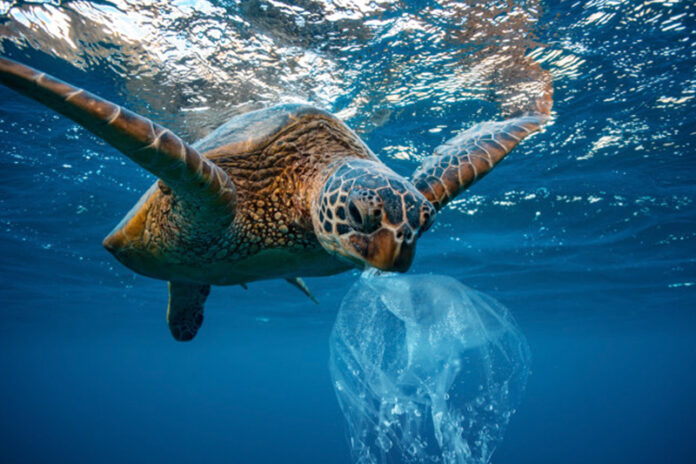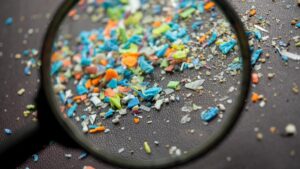
The escalating concerns over plastic pollution and its impact on health have led the Government of Canada to take decisive action. In a significant development, the Honourable Mark Holland, Minister of Health, has announced a substantial investment of $2.1 million over four years. This funding, allocated to three leading academic institutions, aims to deepen our understanding of microplastics and their potential impact on human health. This initiative is a testament to Canada’s dedication to environmental health and safety, and marks a crucial step in addressing the challenges posed by plastic pollution.
The issue of plastic pollution is not just an environmental concern but also a public health issue. The Government’s commitment to assessing and managing emerging risks such as plastic pollution underscores its proactive approach to safeguarding the health of its citizens. This move reflects a growing awareness of the importance of understanding and mitigating the impacts of environmental factors on human health.
The Announcement by Canadian Health Minister Mark Holland
Minister Holland’s announcement is a clear indication of the government’s resolve to tackle this emerging issue head-on. The funding, earmarked for McGill University, Memorial University of Newfoundland, and the University of Toronto, is designed to foster research into the potential exposure to microplastics from various sources. These include food and food packaging, drinking water, indoor and outdoor air, and even dust. The research aims to provide a comprehensive understanding of how these tiny particles may affect human health.

The US Approach to Microplastics
The United States, with its diverse range of ecosystems and significant industrial activities, faces unique challenges related to microplastics. The US approach has been multifaceted, involving federal, state, and local initiatives, with a strong emphasis on regulatory frameworks and public-private partnerships in research.
Key Differences in Strategies
A notable difference lies in the implementation strategies of the two countries. Canada’s approach is heavily centered on academic research and governmental funding, whereas the US strategy includes a broader involvement of the private sector and a more diverse range of funding sources.
Understanding Microplastics
Microplastics are tiny plastic particles, often invisible to the naked eye, that arise from various sources. They can originate from microfibers released during the washing of synthetic clothes, or microbeads found in some cosmetics that enter our waterways. Furthermore, larger plastic items, when broken down in the environment, also contribute to microplastic pollution. These particles can find their way into our bodies through the food we eat, the water we drink, and the air we breathe.
The Impact of Governmental Funding
Governmental funding plays a crucial role in shaping research directions. Canada’s focused investment in microplastics research through academic institutions is set to offer new insights into this field. In contrast, the US funding landscape is more varied, including significant contributions from private and non-profit sectors.
Collaboration Between the US and Canada
Given the shared ecosystems and water bodies between the two countries, collaboration in research and policy development is vital. There are several cross-border initiatives that aim to leverage the strengths of both nations in tackling the issue of microplastics.
Public Awareness and Policy Impact
Both countries recognize the importance of public awareness in driving policy changes. Canada’s recent initiatives have been accompanied by efforts to educate the public about microplastics, while the US has a longer history of public engagement in environmental issues, often driving policy at the state and federal levels.
Academic Institutions Leading the Way
Institutions like McGill University in Canada and various universities across the US are at the forefront of microplastics research. These academic hubs are crucial for advancing our understanding of microplastics and developing innovative solutions.
Technological Innovations in Tackling Microplastics
Both Canada and the US have seen significant technological innovations aimed at addressing microplastic pollution. From advanced filtration systems to biodegradable alternatives to plastics, researchers in both countries are working on cutting-edge solutions.
Challenges and Future Directions
Despite ongoing efforts, both countries face challenges such as the complexity of tracking microplastic pollution and the need for global cooperation. Future directions will likely involve more integrated international efforts and the development of globally applicable solutions.
Canada and the US are part of a larger global effort to tackle environmental issues. Their approaches to microplastics research not only have local and national implications but also contribute to the global understanding and management of plastic pollution.
Long-term sustainability and environmental health are common goals for both countries. The research and policies developed in both countries could serve as models for other nations looking to address similar environmental challenges.
Role of Private Sector
The private sector in both countries plays a crucial role in addressing microplastic pollution. In the US, there is a significant emphasis on public-private partnerships, while in Canada, the government is increasingly looking to involve private entities in environmental initiatives.
Citizen Participation and Community Efforts
Public participation is key to the success of environmental initiatives. Community-led efforts and individual actions in both Canada and the US are vital in reducing microplastic pollution and promoting sustainable practices.
Environmental Health Policies
Comparing the environmental health policies of Canada and the US reveals differences in regulatory approaches and enforcement mechanisms. These policies reflect each country’s unique environmental challenges and priorities.
Impact on Wildlife and Ecosystems
What are the main differences between Canada’s and the USA’s approaches to microplastics research?
Canada focuses on academic research, while the USA employs a broader approach involving public-private partnerships.
How are these efforts impacting global research on microplastics?
Collaborative efforts by both countries contribute significantly to the global understanding of microplastics.
What role does the EPA play in the US approach to microplastics?
The EPA leads scientific research, regulatory frameworks, and international collaborations in the US.In conclusion, while Canada and the USA have distinct approaches to researching microplastics, both are making significant contributions to understanding and mitigating this global environmental challenge.










